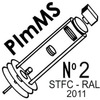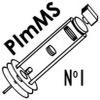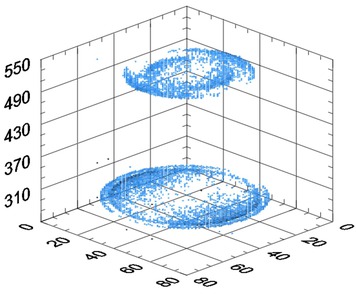MenuApplicationsSpatial Imaging of Chemical Compounds Velocity Mapping Coincidence Imaging Molecular Motion Tissue Imaging DevelopmentFast Scintillators Direct Ion Detection |
Coincidence ExperimentsExpanding on the concept of velocity mapping experiments here, it is possible to look at the relationship between two products of the same single process. The image to the right shows the electron and bromine ion velocity distributions after photoionisation. By initially setting the electric field to accelerate negative particles the electron image can be detected. The electric field is then switched and the bromine ions are accelerated towards the detector. This switching has to occur before the bromine ions have left the acceleration area. As the PImMS sensor can image multiple ions within a single time-of-flight, both the electron and bromine image are obtained for a single laser shot. This means that, by using statistical analysis methods, a correlation between the electron and bromine images can be deduced. This can happen even with a high event rate allowing for faster acquisition. Related Publications |




